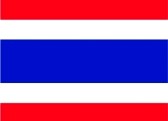All Categories








Seed Needs, Red Yarrow Seeds - 500 Heirloom Seeds for Planting Achillea millefolium rubra - Perennial Host Plant to Attracts Monarchs & Other Pollinators (1 Pack)
Share Tweet
Get it between 2025-08-20 to 2025-08-27. Additional 3 business days for provincial shipping.
*Price and Stocks may change without prior notice
*Packaging of actual item may differ from photo shown
- Electrical items MAY be 110 volts.
- 7 Day Return Policy
- All products are genuine and original
- Cash On Delivery/Cash Upon Pickup Available








Seed Needs, Red Yarrow Seeds - 500 Heirloom Seeds Features
-
Color Variation: While yarrow is commonly known for its white or yellow flowers, red yarrow is a cultivar specifically bred for its striking red to deep pink hues, adding vibrant color to gardens.
-
Medicinal Uses: Like its white counterpart, red yarrow has been used in herbal medicine for centuries. It is known for its astringent, anti-inflammatory, and antiseptic properties, often used in treatments for wounds, reducing inflammation, and aiding in blood clotting.
-
Attracts Pollinators: Red yarrow is particularly attractive to pollinators such as bees, butterflies, and beneficial insects. Its nectar and pollen are valuable food sources, supporting biodiversity in garden ecosystems.
-
Drought Tolerance: Yarrow plants, including the red variety, are highly drought-resistant. They have deep root systems that help them survive in dry conditions, making them excellent choices for xeriscaping or water-conservative gardens.
-
Quality: All seeds packaged by Seed Needs are intended for the current and the following growing seasons. All seeds are stored in a temperature controlled facility that is free of significant amounts of moisture.
-
Quantity: Seed Needs offers generous quantities. You can share with friends and family, or you can save the extra seeds until the following season, if properly stored.
-
Packets: Each seed packet displays an artful illustration of the variety to be grown, as well as detailed seed sowing information on the reverse side. They measure 3.25" wide by 4.50" tall.
-
Promise: Seed Needs will never knowingly supply GMO based seed products. The vast majority of our seeds are open pollinated & heirloom, with the exception of a few hybrids.
-
Germination: Seed Needs packets contain some of the freshest seed available. Direct from the growers. If sown correctly, you will begin seeing results in only a matter of days.
-
Freshness - All seeds are packaged in tear resistant and moisture resistant packaging. This keeps the seeds a whole lot fresher than the competitions selection!
About Seed Needs, Red Yarrow Seeds - 500 Heirloom Seeds
Grow Red Yarrow from fresh Achillea millefolium rubra flower seeds. Red Yarrow will produce clusters of ruby red to deep magenta colored flowers. Mature plants will reach a height of about 12 to 30 inches tall and will spread 18 to 24 inches wide. Red Yarrow flowers are known to attract an array of beneficial insects, such as: butterflies, bumblebees, ladybugs and hummingbirds. Yarrow plants will form single stems that branch off into smaller stems. Each smaller stem can develop clusters of flowers, ranging anywhere from 15 to 50 blooms per cluster. The leaves look similar to a feather, growing in a spiral formation. The Achillea plant can often be seen in floral arrangements and bouquets for their thick, colorful blooms and attractive foliage. Grown as a perennial flowering plant, Red Yarrow will develop a deep root system, later returning the following year after all danger of frost has passed. The plants will flower during the Spring and summer months of May and June, later wilting. Greatly used in borders, flower beds and by the masses in a naturalized setting.




 (1)
(1)






















